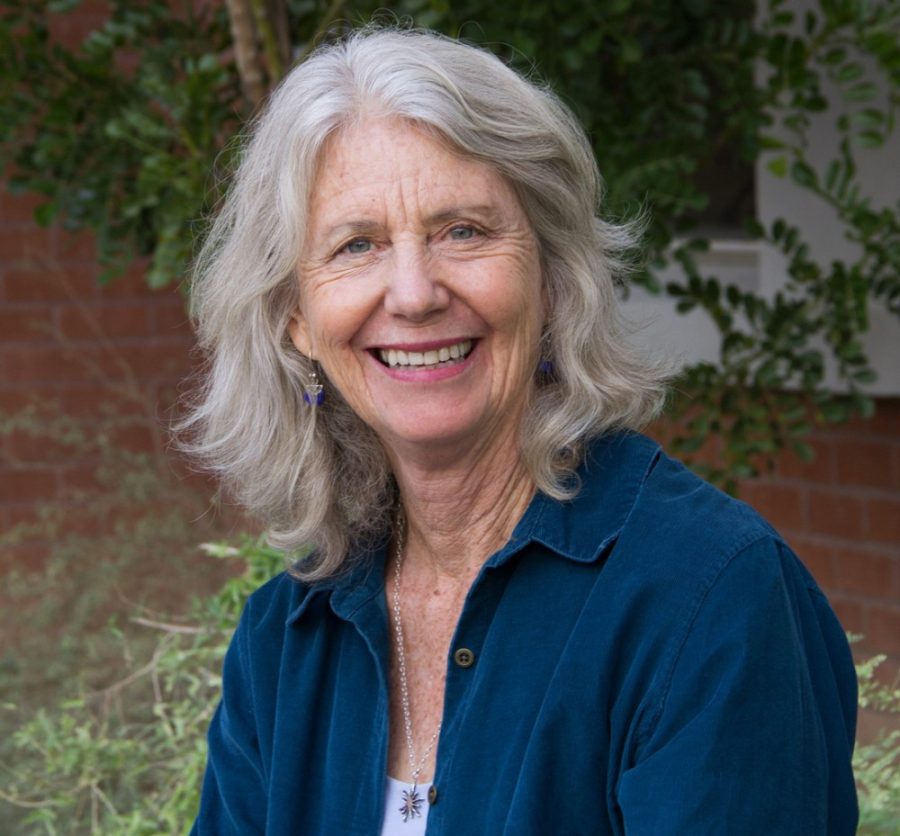Ellen McMahon teaches her students to learn the importance of environmental issues through the use of design and art at the UA.
She has been teaching “Critical Issues in Design” for nearly 20 years, and soon the course will be renamed to “Art, Design and Science.” The students collaborate with UA scientists on their projects with the goal of creating visual responses to the science they will work with.
McMahon asks her students what they care about and what they want to change. Students must then create a solution to the problem they feel the most passionate about by analyzing it and figuring out what needs to be done to make it better.
“They are able to make choices that are more in line with their own values,” McMahon said.
McMahon originally started her career out in science and majored in biology. Her mother was an artist, and McMahon found her passion for art while she was working in the biology field.
“I began drawing out the animals,” McMahon said, “and I realized that what I really loved was closely observing them and drawing them.”
She came to the UA as a biologist in 1980, having received a teaching assistantship in general biology, and completely changed careers to become a scientific illustrator.
“The UA has been so good to me,” McMahon said.
As a graduate student, McMahon taught biology 101, and almost immediately after graduating, she was hired to teach as an adjunct at the UA in the design department. In 1990, she was hired as a tenure track professor.
“What’s been great for me is the freedom that I have had to develop my own work, research and teaching within the School of Art,” McMahon said.
McMahon teaches her design students the importance of ecology. Everything that is being used comes from somewhere, and everything they make ends up in the trash.
“That trash has different effects,” McMahon said.
McMahon said she wants her students to understand the waste stream and supply lines and stress as being important for everyone.
One of the various projects McMahon is currently working on involves the issue of forest die-off.
“Climate change is really going to trump any other problem we have,” McMahon said.
According to McMahon, 20 percent of the forests in the Southwest are already dead. There are many factors to blame for die-off, but McMahon said she believes the 1.5-degree rise in temperature is the main cause.
“The Southwest is going to feel the effects of climate change sooner and harder than any other place in the United States,” she said.
McMahon added that she classifies herself as an unconventional designer. Her work is primarily involved with photography, drawing, video, book design and project directing.
“As a designer, I [now] think in terms of networking people,” McMahon said.
She said she would classify her work as “social design,” because she brings scientists, designers, artists, institutions and grants together to work on projects that benefit everyone.
“I like to think about science, design and art as having separate roles in the sort of challenge we find ourselves in right now,” McMahon said.
She added that she defines science as collecting data and getting information.
“Scientists are very alarmed, but they don’t know how to get to the public,” McMahon said.
She said the role of a designer is to visually communicate information and that design has a way of clarifying and interpreting.
McMahon teaches her design students how to clearly translate information through their work to make it understandable to everyone else. McMahon said this is a way that they can do their part to encourage people to change what is happening in the world.
“The role of art is to really channel mystery and wonder,” McMahon said.
Currently, McMahon is working a collaborative project with scientists that study forest die-off in the Southwest. They will be exhibiting their work in the UA Laboratory of Tree-Ring Research.
“To get art, design and science on a certain issue, and have them all work the way they work is the ideal situation,” she said.
_______________
Follow Katelyn Caldwell on Twitter.








